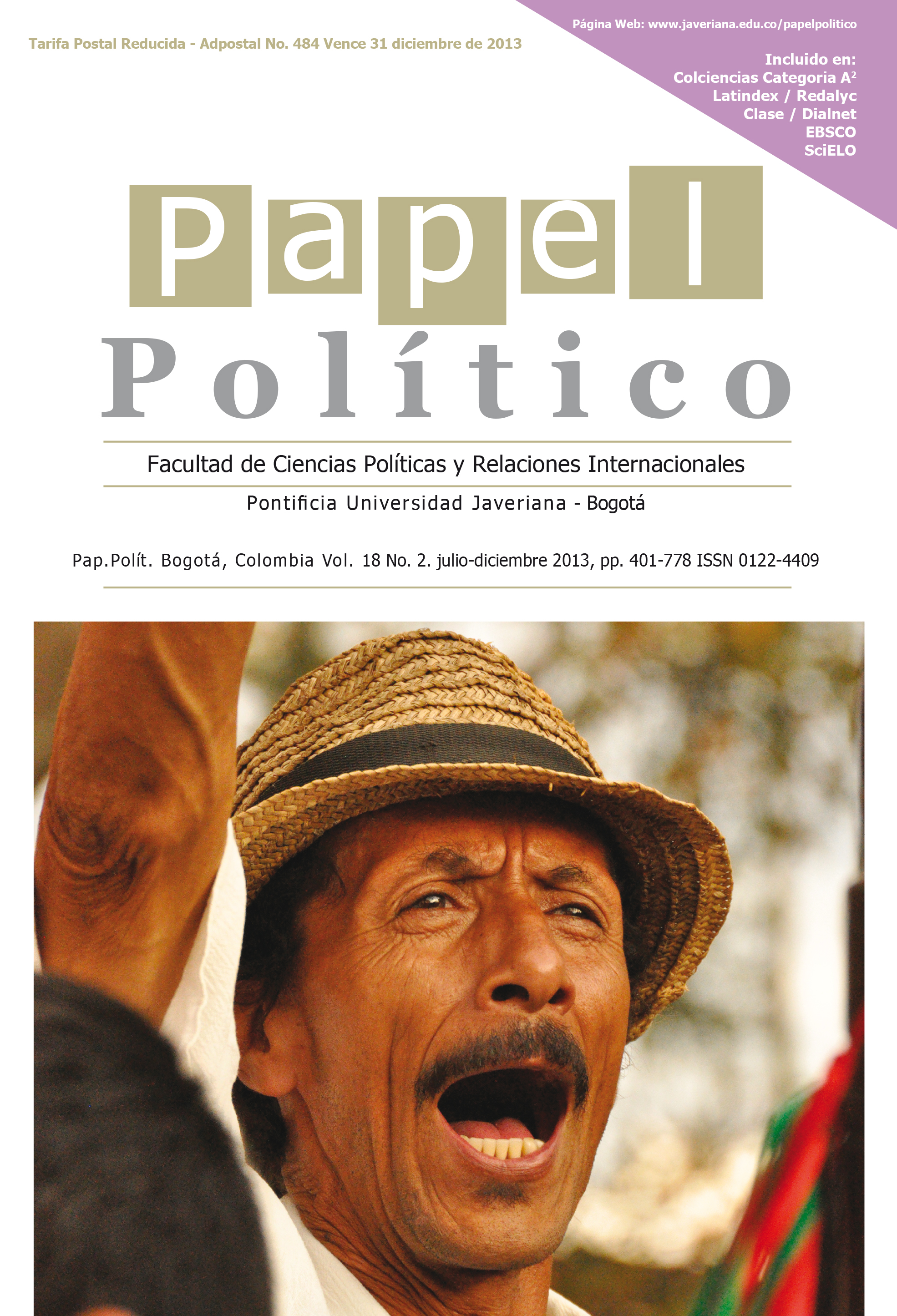Community Resistance in Colombia. The Cabildos of Cauca and their Indigenous Guard
##plugins.themes.bootstrap3.article.details##
Abstract
In social contexts afflicted by high intensities of conflict and violence, black communities, peasantand indigenous communities in Colombia have given different meanings to civil resistance that meet the needs of particular contexts and the different forms of violence that afflict them. The Cauca region is known for its tradition of indigenous organization and its resistance against the landlords and the state. The civil resistance of the indigenous movement exercise autonomy and includes several elements such as community and political participation, the IndigenousGuard and permanent assemblies. Due to the work of organizing the communities are able to give a response to the situation of war in the area. The Indigenous Guard is controlled by the indigenous authorities, and originated from the need to preserve the integrity and autonomy of the territory, defend the rights of indigenous peoples, and disseminate indigenous culture and law. In relation to the guerrilla movement the Association of Indigenous Communities of Northern Cauca recognizes that the guerrilla has historically been another form of resistance to the state and defender of indigenous peoples’ rights and demand from the guerrilla respect for their culture, customs, lands and territories.
Keywords
Autonomy, indigenous communities, Cauca, Indigenous guard, Resistencia, autonomía comunitaria, Cauca, guardia indígena,
References
How to Cite
Rudqvist, A., & Anrup, R. (2013). Community Resistance in Colombia. The Cabildos of Cauca and their Indigenous Guard. Papel Político, 18(2), 515–548. Retrieved from https://revistas.javeriana.edu.co/index.php/papelpol/article/view/7421
Issue
Section
Political Science


